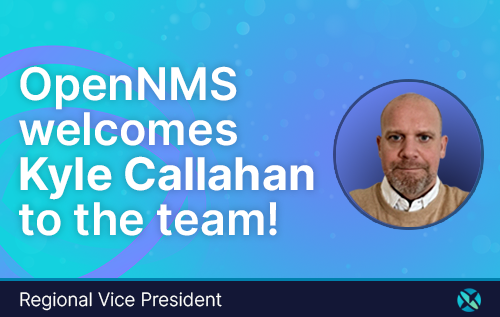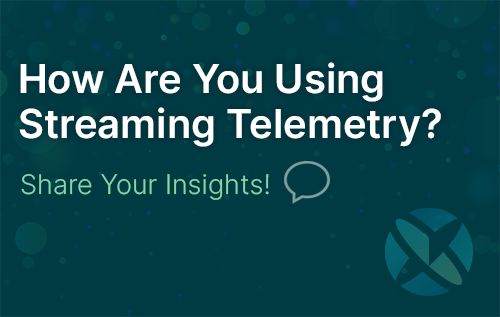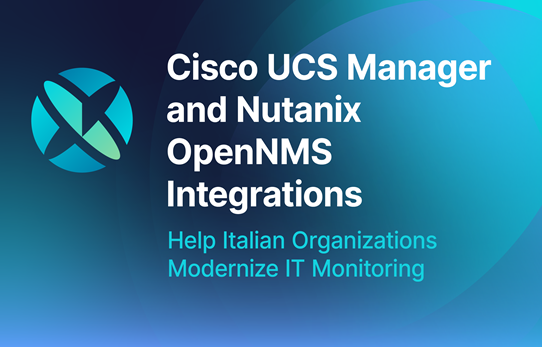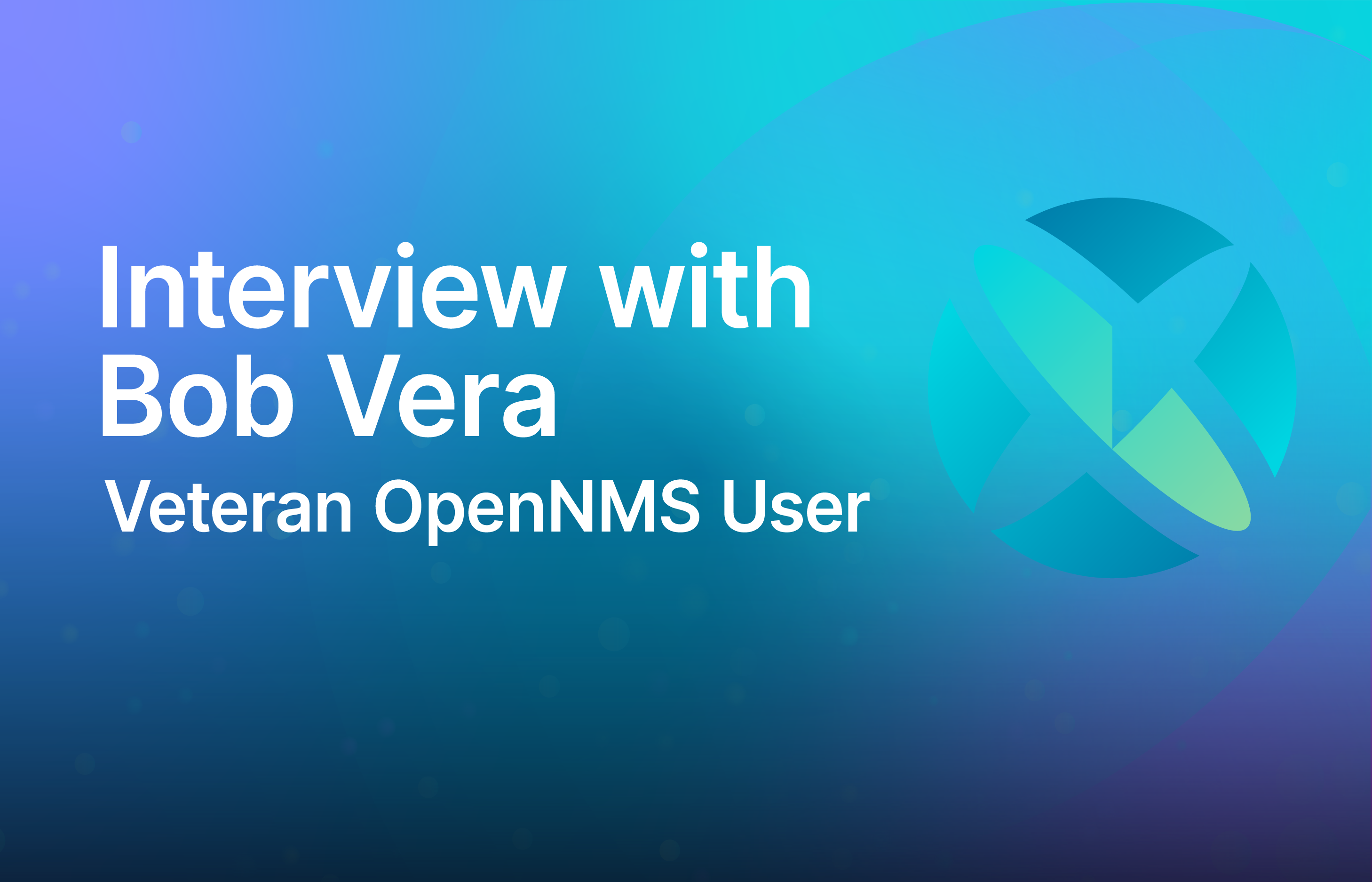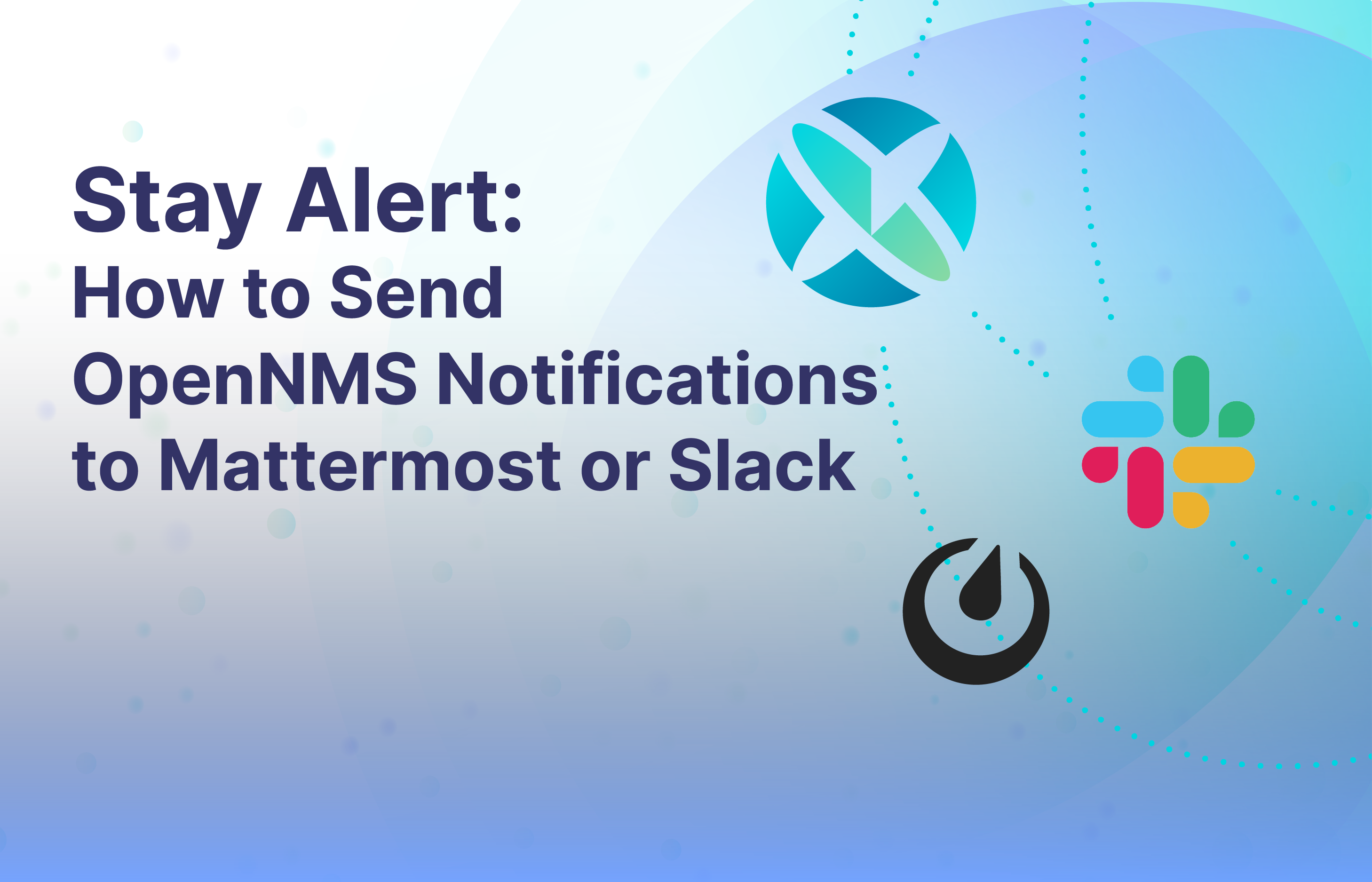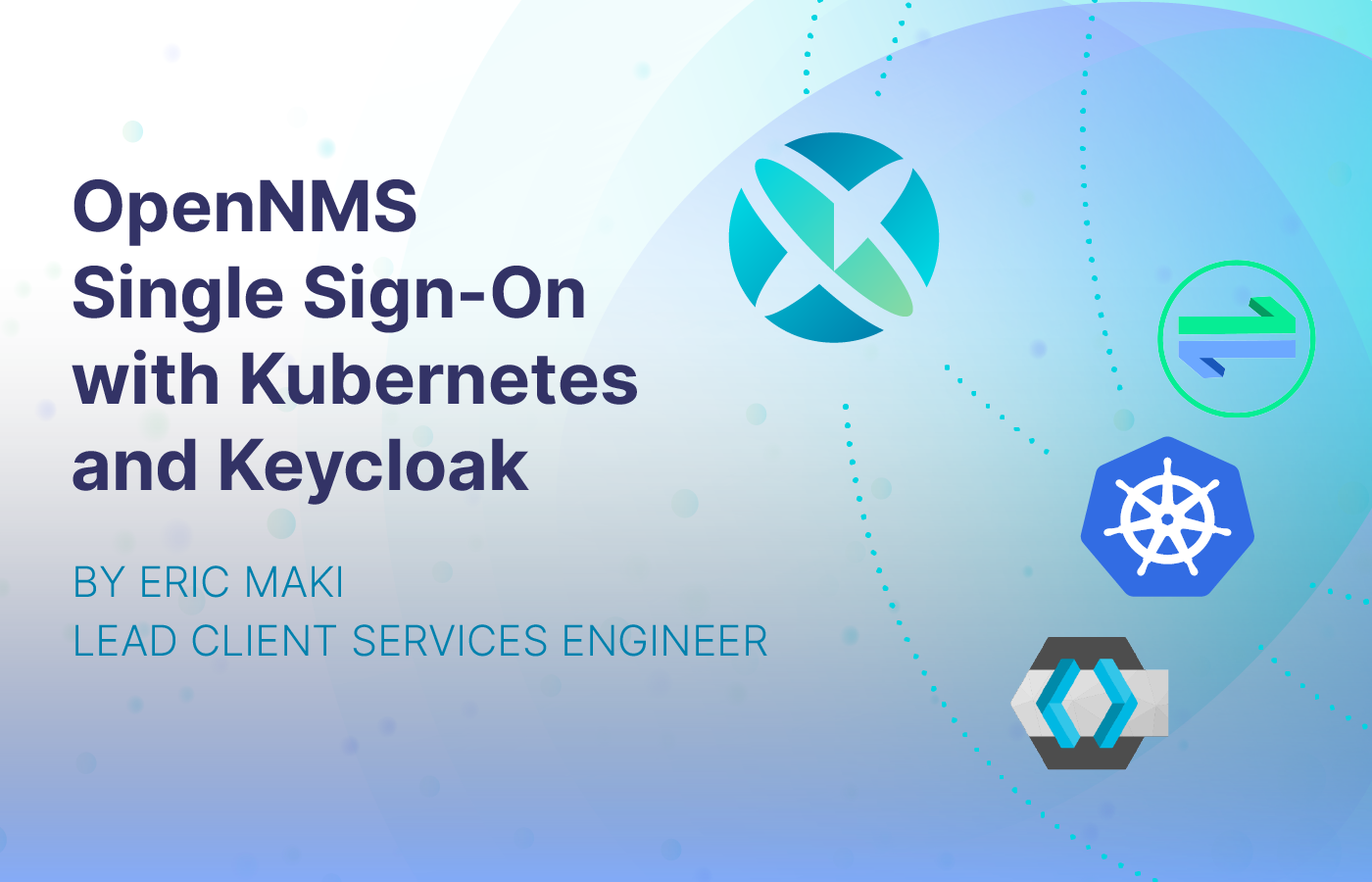What were the criteria you used to choose OpenNMS?
"When I decided to choose OpenNMS, I used the following criteria:
- Open source: This is important to me because I wanted to be able to customize OpenNMS to meet the specific needs of my organization.
- Scalability: I wanted to be able to use OpenNMS to monitor my network as it grows in the future.
- Features: I wanted a software that could monitor all aspects of my network.
- Community: OpenNMS has a large and active community of users and developers you can interact with in forums and mailing lists to get help.
- Cost: Last, but not least, saving costs."
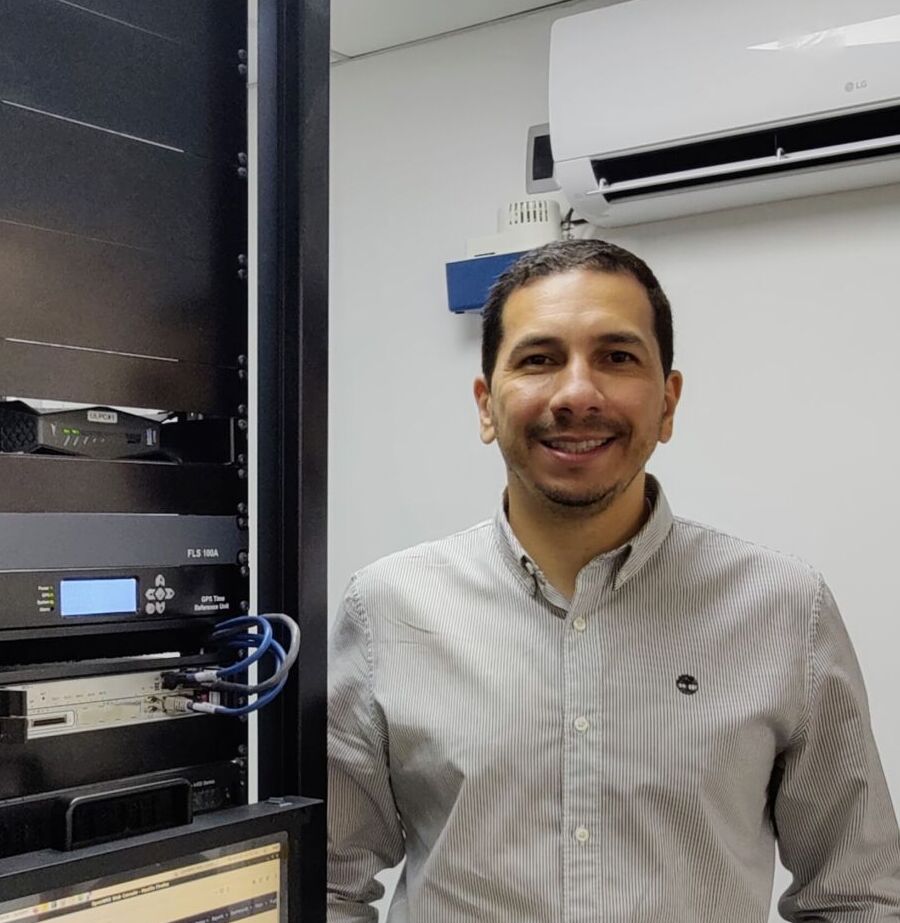
Why do you continue to you choose OpenNMS?
"For me, the most important aspect of OpenNMS is its customizability. It is an enterprise-grade solution, but it still allows you to define exactly what and how to monitor, and to establish under which conditions you will receive an alert when something happens in your network. It has a wide range of features that makes it suitable for almost every need and situation.
This is why I describe it as the "Swiss Army Knife" of network monitoring. Other important aspects I took into account when choosing OpenNMS over other solutions include:
- It has a large and helpful community
- It can monitor large networks, it can grow with your company
- No hidden costs or fees to enable features ,you can maintain it completely on your own.
- The solution has been evolving constantly and adding very helpful features."
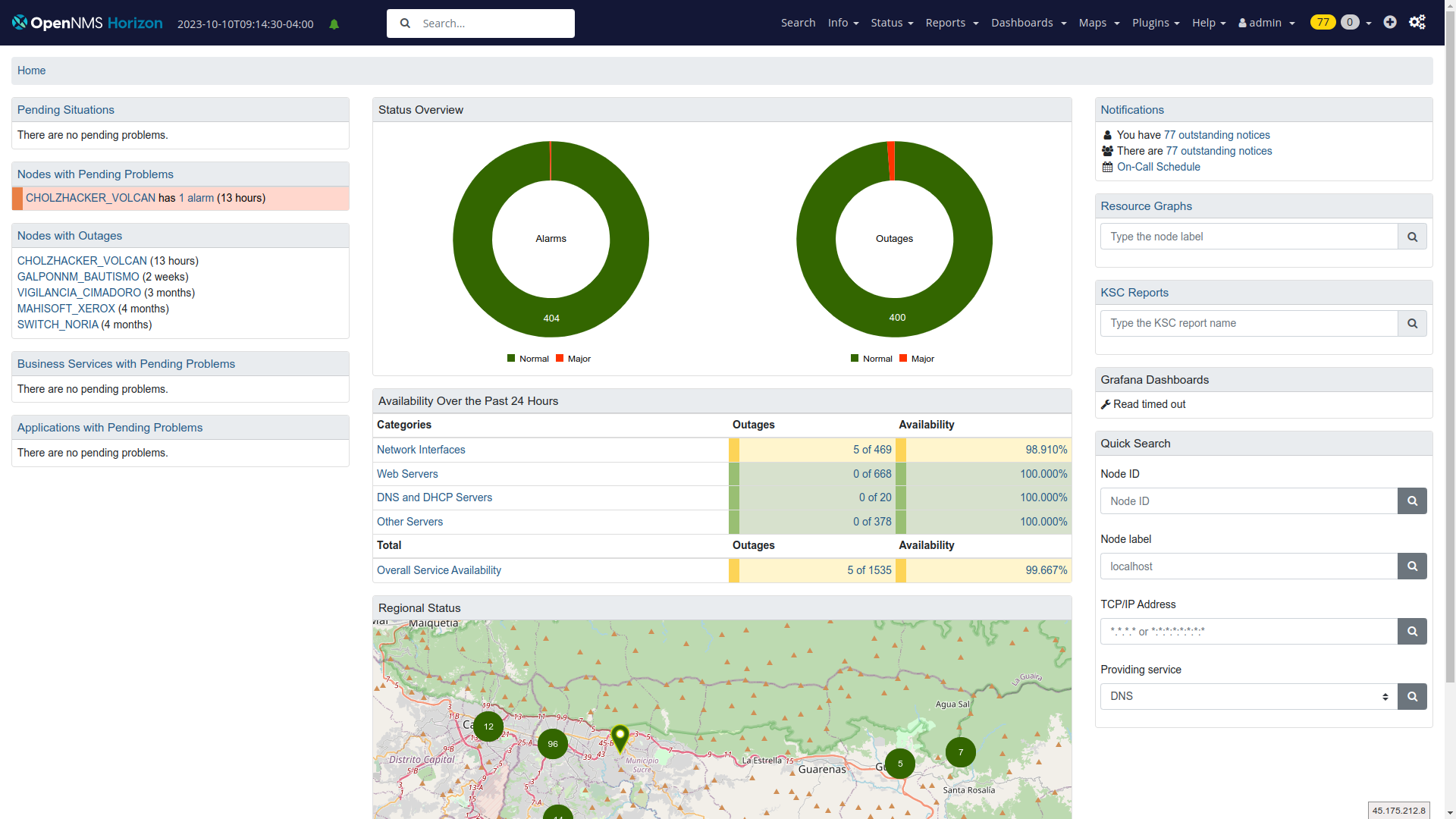
Urbalink Network's OpenNMS Horizon dashboard
How does OpenNMS help you achieve your objectives?
"Network monitoring software should be flexible enough to provide an at-a-glance overview of the current status of your network, with critical metrics from routers, switches, firewalls, servers, services, application, URLs, printers, UPS, and other infrastructure devices. We’ve provided solutions using OpenNMS and helped them adjust the platform to monitor the required specifics that can help administrators quickly troubleshoot problems and overview metrics metrics to make decisions proactively in order to avoid unnecessary downtime in their services.
Some of the most common metrics we used to track are:
- Device uptime: The most straightforward, high-level KPI is uptime, which measures the fundamental goal: how often the service is available.
- Network traffic: In our actual use case this metric tracks the amount of network traffic that is flowing through a device or a network. This help us to identify devices that are experiencing congestion and make adjustments on the fly.
- Packet loss and re-transmissions: Packet loss often signals interference or congestion on the network. A common symptom of this issue is data transferring from one device to another but not entirely reaching its destination. Monitoring packet loss is vital because it's a surrogate for the wireless network's overall health.
By tracking these metrics, we gain valuable insights into the performance of our network and business."
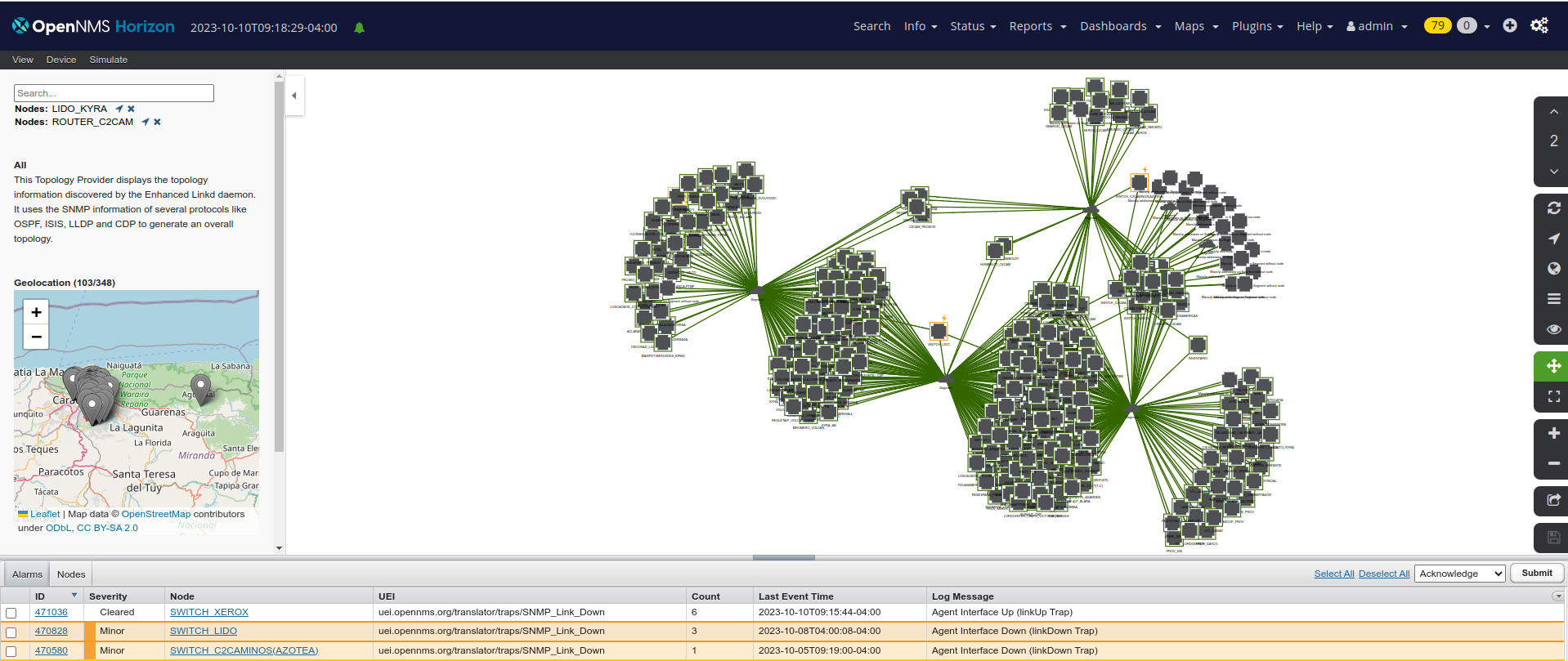
OpenNMS Horizon maps Urbalink Network's network
Can you measure any reduced costs, thanks to OpenNMS?
"Since the average cost of a license for a network monitoring solution goes from more than $2,000 for the first year of use up to $30,000 or $50,000, there is a clear reduction in costs when you use OpenNMS Horizon. Of course, you have to keep in mind that you need to have the skills to maintain the solution adapted to your needs. Even when there’s an active and supportive community, skills are required.
In some cases you need to weigh the possibility of acquiring an OpenNMS Meridian subscription, which is the best cost-effective solution for an enterprise-grade monitoring system—and you'll still be able to reduce costs, directly or indirectly."
Can you measure any improvements in productivity or time savings?
"Using OpenNMS has made our business more efficient by helping us track network performance quickly and accurately. OpenNMS can instantly gather information from every part of a network, ensuring that each part is performing its function. This helps us to identify and resolve issues before they cause downtime, which in turn increases productivity and less support tickets to solve ;-) …
One of the major advantages of using OpenNMS is that it gives us the ability to identify issues before our customers do. This allows us to take proactive measures to resolve the issues, which helps to improve customer satisfaction.
As a result of using OpenNMS, Urbalink Networks has built a very stable customer base without the need of aggressive marketing. We have a reputation for excellent customer service and reliability, which has helped us to increase our customer satisfaction, reduce our costs, and improve our profitability."
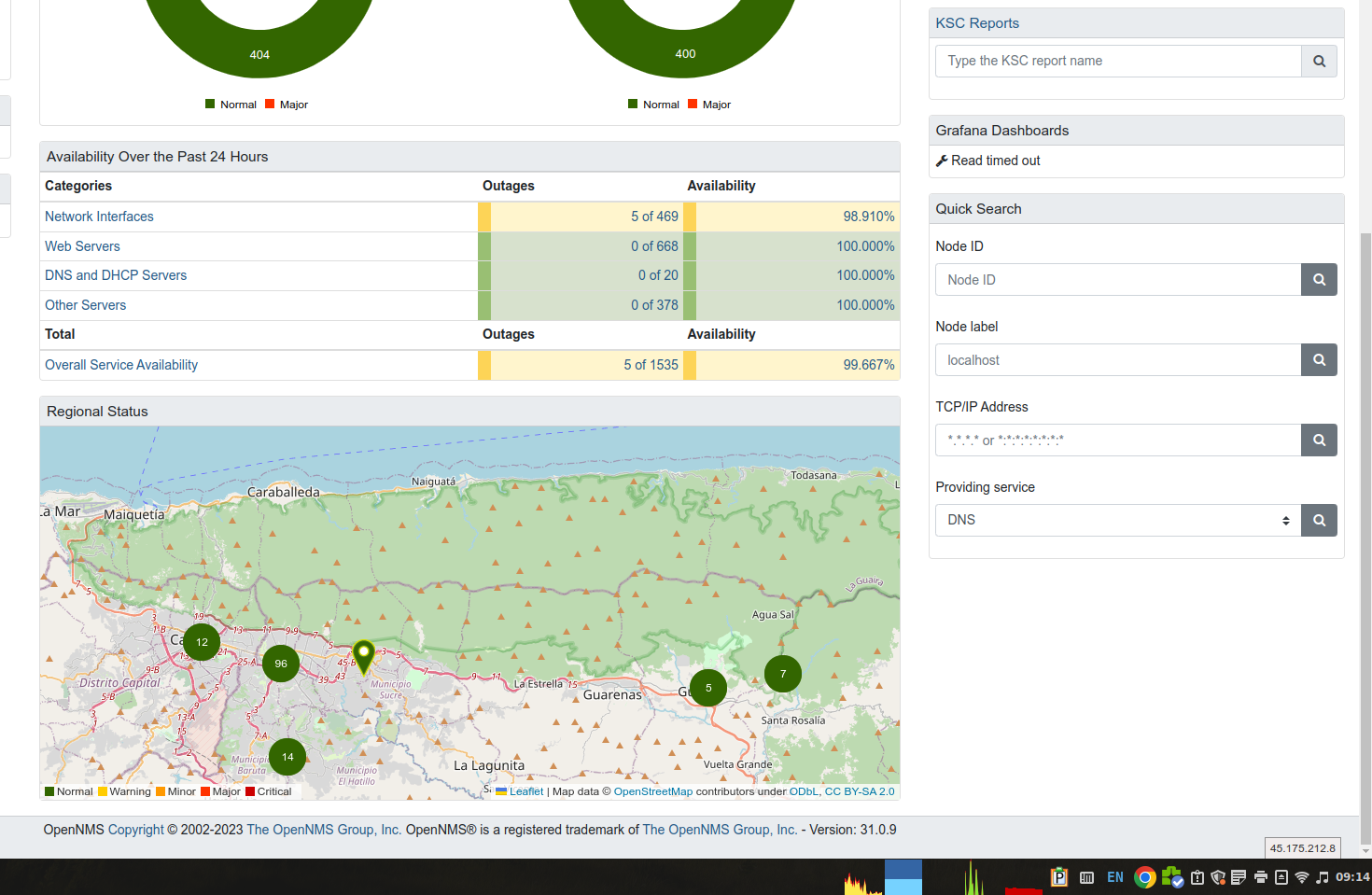
Monitoring the regional status of Urbalink Network's network
What are you looking forward to for the future of OpenNMS?
"One of the things I look forward to is the continued growth of the OpenNMS community. I am excited to see the community continue to grow and to see what new and innovative things they come up with.
I am also excited to see how OpenNMS Horizon evolves and how it becomes more accessible to a wider range of users. In this regard, I think that the learning curve could be improved by making the interface more intuitive and by providing more wizards and other tools to help new users get started."
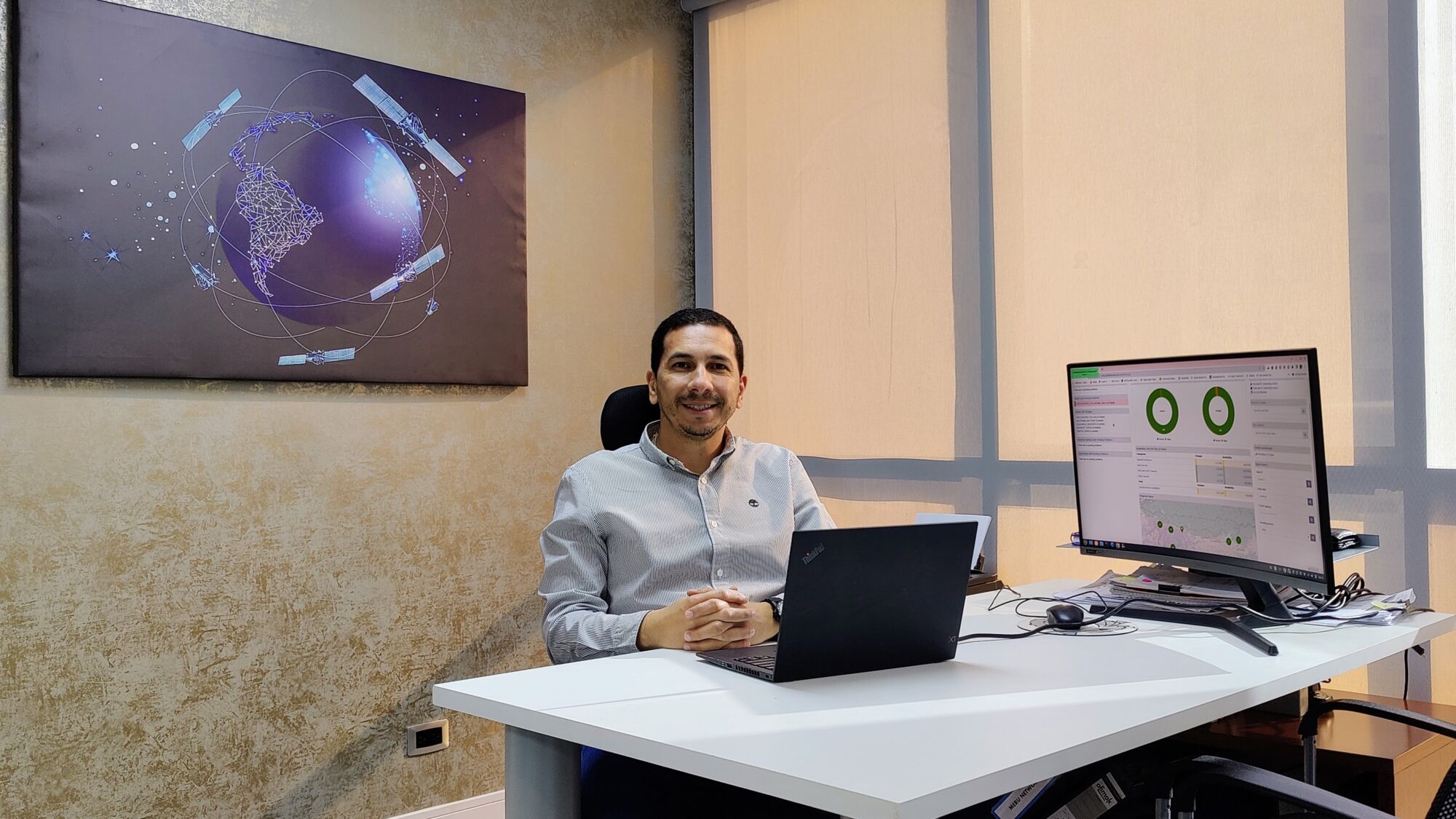
What is your advice to others who might be considering OpenNMS?
"My humble advice to anyone considering using OpenNMS would be:
- Get involved in the community: Getting involved in the community is a great way to learn more about OpenNMS and to get help from other users.
- Start small: OpenNMS can be a complex platform. It is a good idea to start small and to gradually enable features and functionalities as you need them.
- Be patient: Learning OpenNMS takes time. Be stubborn, don't give up, and don't be discouraged if you don't understand everything right away. Just keep learning and experimenting, and you will eventually get the hang of it."
